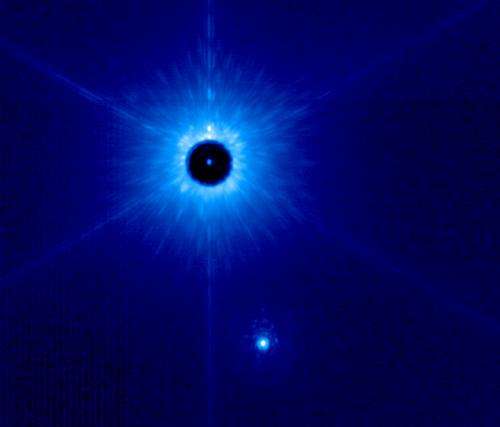Astronomer point the way for exoplanet search

(Phys.org)—Though the search for planets around other stars, or exoplanets, is showing researchers that planets are abundant in our galaxy, it helps a great deal to have directions when searching for as-of-yet undiscovered exoplanets.
Lowell astronomer Evgenya Shkolnik and her collaborators have written such a set of directions, if you will.
Their paper, recently published in The Astrophysical Journal, examined new and existing data from stars and brown dwarfs that are less than 300 million years old, as determined from strong X-ray emission readings. In all, the authors identified 144 young targets for exoplanet searches, with 20 very strong candidates, according to Dr. Shkolnik. This candidate list is being searched for planets with Gemini's NICI Planet-Finding Campaign and the Planets Around Low-Mass Stars survey, led by astronomer Michael Liu and graduate student Brendan Bowler, respectively, both at the Institute for Astronomy, University of Hawai'i.
By looking for markers in spectroscopic data and measuring the motions of the stars, Shkolnik and her collaborators were able to carefully examine the age of each stars. Since low-mass stars are small and dim, they are good candidates for directly imaging planets around them. And young stars make it even easier since the young planet is still hot and bright. Plus, knowing the planetary system's age allows for the characterization of the planet itself beyond the initial detection.
The authors sifted through data of about 8,700 stars within 100 light years of the Sun to find these candidates. The spectra were collected using two Hawaiian Mauna Kea telescopes (Keck and the Canada-France-Hawaii telescopes), and distances to the stars were measured by Guillem Anglada-Escude (Universität Göttingen) using the du Pont telescope in Chile, operated by the Carnegie Institution for Science.
"Since low-mass stars are the most common type of star in our galaxy, most planets probably reside in these environments," says Mr. Bowler. "Finding young versions of these stars to search for planets is fundamental to understanding the galactic census of exoplanets."
"These young stars help point the way. And if the Jupiter-mass planets are there, we will find them," notes Dr. Shkolnik.
In this search, planet hunters are happy to have directions but they know the landscape of our understanding is subject to change.
More information: Abstract: iopscience.iop.org/0004-637X/758/1/56
Journal information: Astrophysical Journal
Provided by Lowell Observatory



















